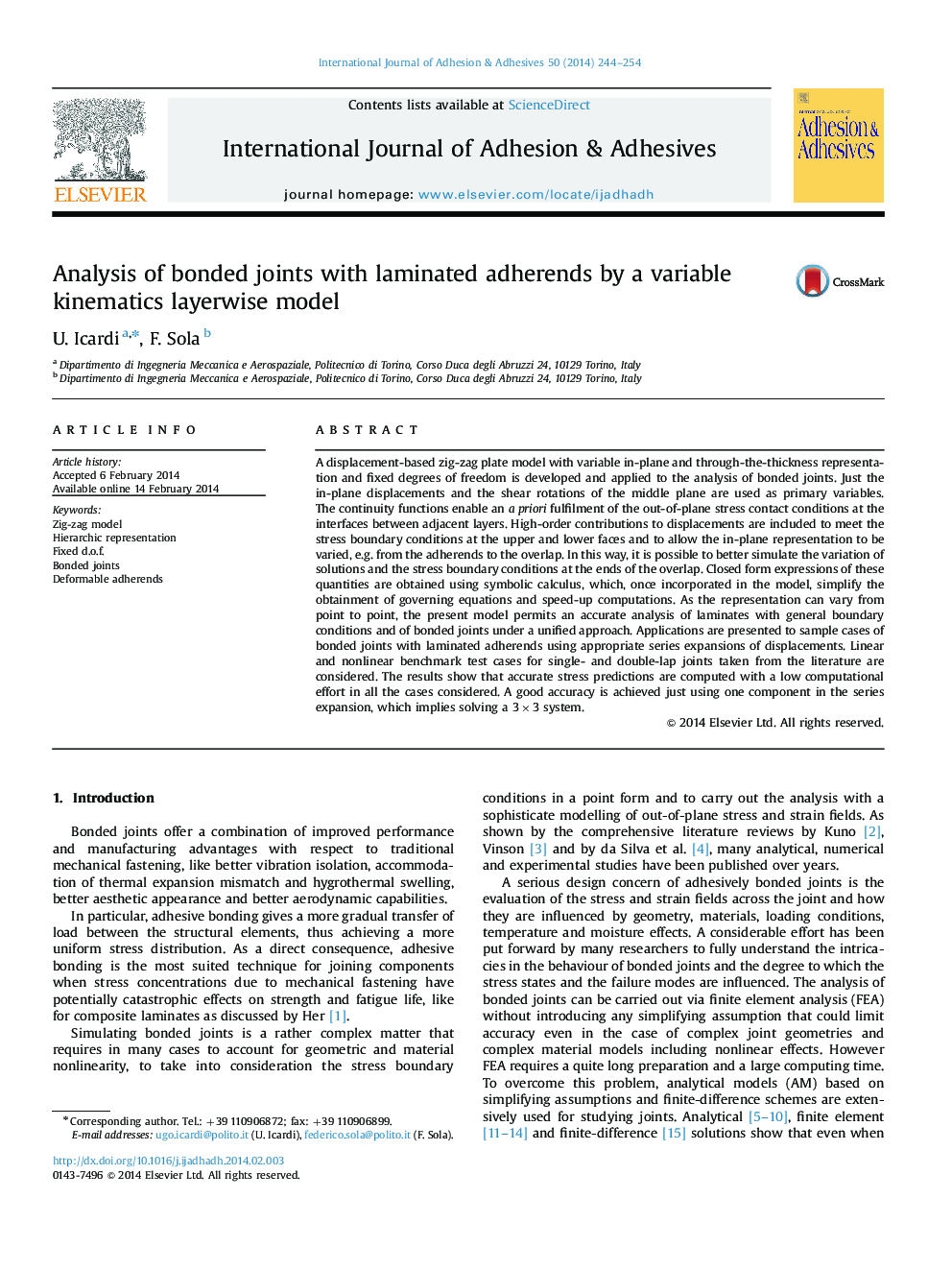| Article ID | Journal | Published Year | Pages | File Type |
|---|---|---|---|---|
| 776763 | International Journal of Adhesion and Adhesives | 2014 | 11 Pages |
A displacement-based zig-zag plate model with variable in-plane and through-the-thickness representation and fixed degrees of freedom is developed and applied to the analysis of bonded joints. Just the in-plane displacements and the shear rotations of the middle plane are used as primary variables. The continuity functions enable an a priori fulfilment of the out-of-plane stress contact conditions at the interfaces between adjacent layers. High-order contributions to displacements are included to meet the stress boundary conditions at the upper and lower faces and to allow the in-plane representation to be varied, e.g. from the adherends to the overlap. In this way, it is possible to better simulate the variation of solutions and the stress boundary conditions at the ends of the overlap. Closed form expressions of these quantities are obtained using symbolic calculus, which, once incorporated in the model, simplify the obtainment of governing equations and speed-up computations. As the representation can vary from point to point, the present model permits an accurate analysis of laminates with general boundary conditions and of bonded joints under a unified approach. Applications are presented to sample cases of bonded joints with laminated adherends using appropriate series expansions of displacements. Linear and nonlinear benchmark test cases for single- and double-lap joints taken from the literature are considered. The results show that accurate stress predictions are computed with a low computational effort in all the cases considered. A good accuracy is achieved just using one component in the series expansion, which implies solving a 3×3 system.
